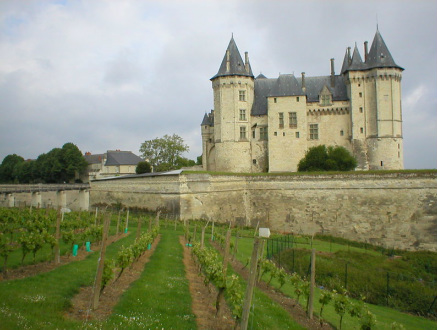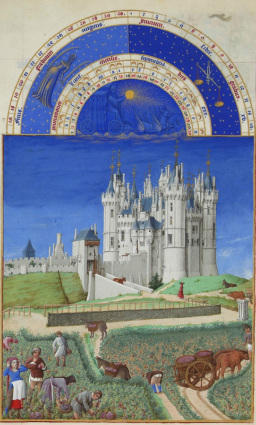Chateau de Saumur

Château de Saumur; Wikimedia Commons
The Saumur castle was originally constructed in the 10th century by Theobald I, Count of Blois. He edified it as a fortification against Norman incursions into the territory. The castle overlooks the confluence of the Loire and Thouet rivers. Fulque Nera, the Black Falcon, the formidable Count of Anjou took hold of it in 1026, and it subsequently was passed on to his heirs, the Plantagênets. In the early part of the 13th century, Philip II of France made Saumur part of his royal domain. Following its destruction in 1067, the castle was rebuilt by Henry II of England in the later part of the 12th century.
Chateau de Saumur: XV Century

Les Très Riches Heures du Duc de Berry; September
The picture you see on the right, is the page for September in the prayer book of the Duke of Berry ("Les Très Riches Heures du Duc de Berry") as it looked when this prayer book was made (1410). The Duke of Berry was the king's brother. In 1589, King Henry IV gave the castle to the nobleman Duplessis-Mornay.
In the first part of the 20th century the city of Saumur acquired the castle, which now serves as a museum and an equestrian center for the famous "Cadre Noir".
See more here.